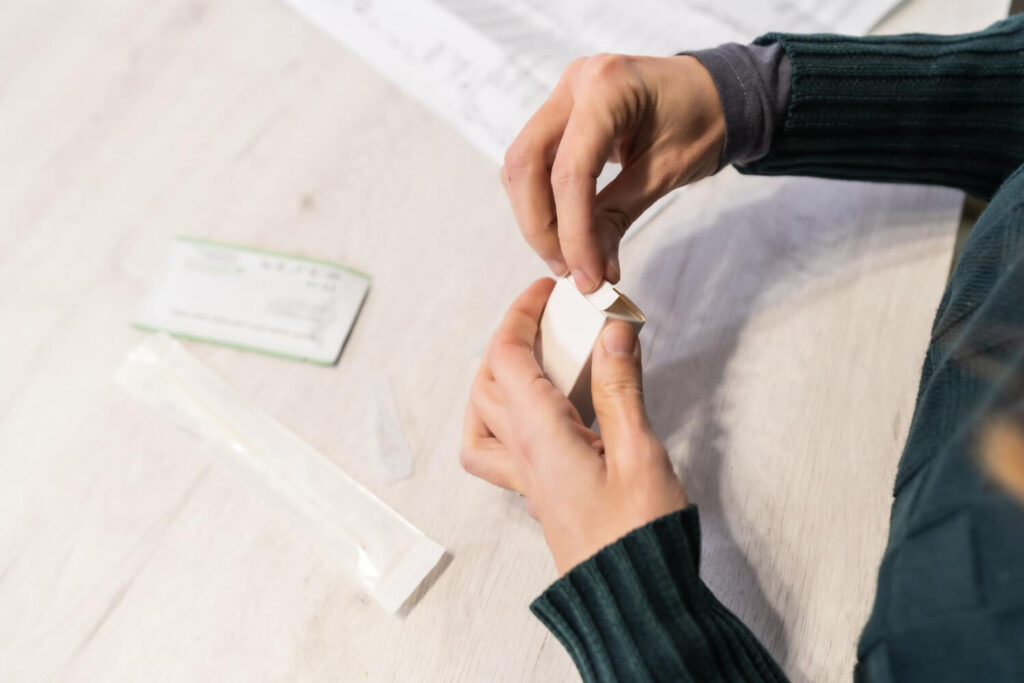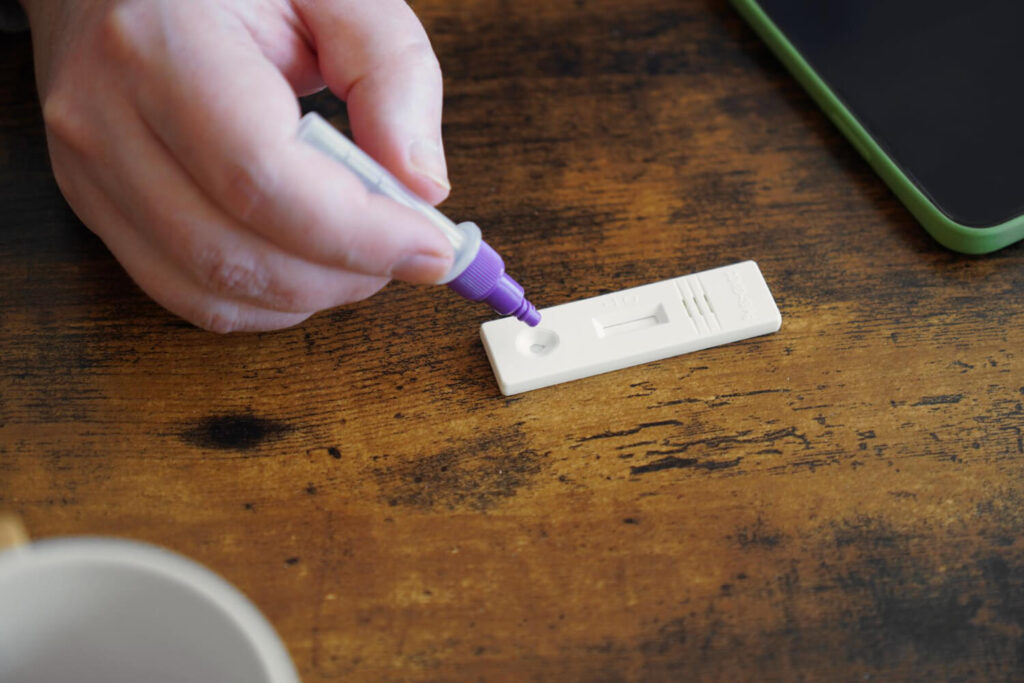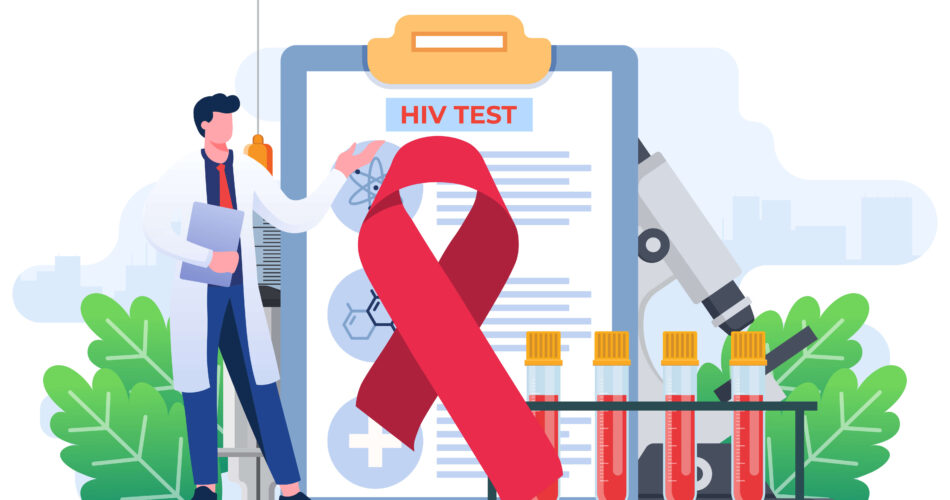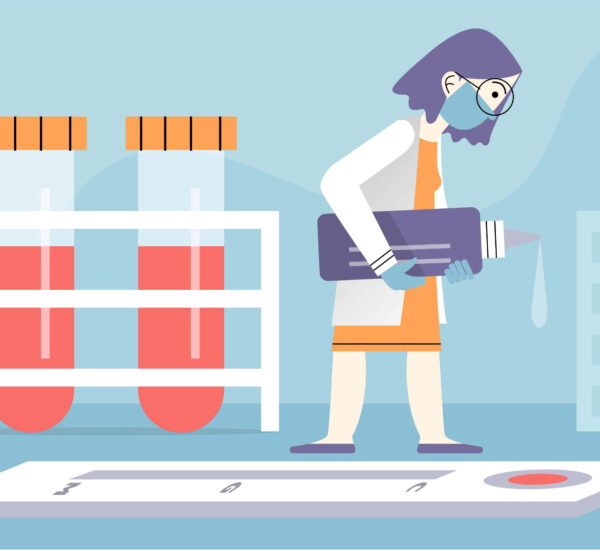When it comes to early detection of HIV, at-home HIV test kits have been a great help. This access to health tools like an HIV test allows people to monitor themselves. At the same time, recognize if they have been infected by HIV. Furthermore, this home testing provides a better approach for individuals, which promotes convenience, privacy, and peace of mind. In short, it is an innovative change in the health department as it takes care of the patient’s body and mental health.
While these aspects show how convenient and reliable at-home HIV testing is, there may still be some other questions that individuals want to know about this test kit. Find out how HIV treatment begins by using rapid diagnostic tests like the at-home HIV tests. Discover more in this comprehensive guide below!
What is At-Home HIV Testing

At-home HIV test kits are commonly rapid diagnostic tests that enable individuals to test for HIV in the comfort of their own homes. It offers a discreet and convenient alternative to traditional testing methods, which makes it a reliable tool for patients with possible exposure to HIV.
Using such a particular test involves detailed instructions for self-administration, along with necessary materials for collecting a sample of oral fluid or blood. Thus, it allows people to check HIV signs by analyzing the test results, and be able to know when to seek help from a health care provider.
At-Home HIV Test vs Lab Test
Historically, HIV testing involved a visit to a healthcare professional or a testing center, where blood samples were collected and sent to a laboratory for analysis. At the same time, other laboratory types of tests can occur for determining HIV components.
This procedure is still present in various health centers today. Unfortunately, this process often necessitated multiple appointments and long waiting times for results. Furthermore, it lacks the privacy that potential patients of HIV need to avoid the ongoing stigma against them. That’s why having alternative options like at-home HIV tests helps individuals to recognize the reality, which is the possibility of being an HIV patient in their own safe space.
At-home HIV test or home testing for HIV caters to the growing demand for convenient healthcare solutions. It is designed with the latest technology advancements, which are approved and regulated by health authorities. With this technology, it allows individuals to test for HIV in the comfort and privacy of their own homes, providing immediate results without the need for laboratory analysis.
Furthermore, at-home HIV testing kits often come with comprehensive instructions and support services, including counseling hotlines and resources for follow-up care. This not only empowers individuals to take control of their health but also ensures that they have access to the necessary information and support throughout the testing process.
The Role of HIV Testing in Disease Management
HIV testing is the cornerstone of HIV screening for prevention and control strategies. It allows individuals to know their HIV status, seek appropriate medical care, and take necessary steps to protect their partners from infection. Testing also enables healthcare providers to monitor the effectiveness of treatment and make informed decisions regarding patient care.
Regular HIV testing is a rapid test recommended for individuals at higher risk of HIV exposure, such as those with multiple sexual partners, people who inject drugs, individuals with recent infection, and individuals from communities with high HIV prevalence. By promoting routine testing, healthcare providers can identify new infections early, link individuals to care, and prevent further transmission within the community.
In short, HIV testing promotes disease control and helps make the community a safer place for everyone. With at-home HIV tests, which the World Health Organization has been promoting, everyone can achieve this goal.
Advantages of testing for HIV at home

As mentioned, the at-home HIV test is a health tool the WHO aims to promote for everyone. Due to the global impact of HIV, it calls for a solution that can aim for early detection and intervention. That’s where home test kits like this come in.
Here are some of the reasons why at-home HIV tests are a great choice for early detection of HIV and promote intervention. Let’s discuss them below!
Convenience of Testing at Home
When it comes to the previous method of HIV testing, it was mentioned that it takes a long process to check the patient’s HIV status. That involves appointments, waiting times, and more. However, at-home HIV tests aim to remove that long process. With at-home tests, individuals can perform the test at their convenience, saving time and effort while ensuring timely access to crucial information about their HIV status.
Moreover, the convenience of at-home HIV testing extends beyond just saving time. It can be particularly beneficial for individuals with busy schedules, mobility issues, or living in remote areas with limited access to healthcare facilities. By offering a user-friendly testing option that can be done in the comfort of one’s own home, at-home HIV tests help bridge the gap in healthcare accessibility, ensuring that more people can easily monitor their HIV status.
Accessibility
On the other hand, there are also options where individuals can acquire free tests from their local health centers. Some community programs involve providing free HIV test kits to families to identify the number of HIV cases in their area. That means, it allows everyone to promote and become proactive about their health against HIV.
Ensuring Privacy and Confidentiality
One of the primary concerns individuals may have regarding HIV testing is privacy. At-home HIV tests offer a discreet and confidential testing experience, allowing individuals to take control over their healthcare decisions without fear of judgment or breaches of confidentiality.
Furthermore, the privacy and confidentiality provided by at-home HIV testing can be crucial for individuals in marginalized communities, where the stigma surrounding HIV/AIDS may prevent them from seeking testing in traditional healthcare settings. By offering a private alternative, at-home testing kits empower individuals to prioritize their health disclosing sensitive information to others.
Achieving Peace of Mind Through Immediate Results
Waiting for test results can be an anxiety-inducing experience. At-home HIV tests provide immediate results, eliminating the agonizing wait and offering individuals peace of mind. Swift access to HIV status empowers individuals to make informed decisions about their health and well-being.
Moreover, the immediate results from at-home HIV testing can be particularly beneficial for those who may be anxious or apprehensive about their status. By offering instant feedback, these tests enable individuals to quickly address concerns and seek appropriate follow-up care or support, ultimately promoting proactive healthcare management.
Understanding the Testing Process

At-home HIV testing typically involves collecting a small blood sample using a kit provided by the test manufacturer. This sample is then processed using the instructions provided, with results available in minutes. Clear instructions and support materials are included to ensure accurate and reliable testing.
It is important to note that at-home HIV testing kits are designed to be user-friendly, allowing individuals to perform the test in the privacy of their own homes. The kits usually contain all the necessary components for collecting the blood sample, such as lancets, alcohol swabs, and a collection card. Once the sample is collected, it is placed in a designated area on the test kit for processing.
Interpreting Your Test Results
Most at-home HIV tests come with easy-to-understand instructions to help individuals interpret their test results. Upon receiving the test results, individuals are advised to carefully read the instructions provided in the kit to understand the implications of their results.
Negative results generally indicate that no HIV antibodies were detected. Meanwhile, positive results suggest the presence of HIV antibodies and the need for further testing through a healthcare professional.
It is essential to follow up with a healthcare provider if the test results are positive, as confirmatory testing and counseling are crucial steps in managing HIV infection. Remember, early detection and treatment play a significant role in improving health outcomes for individuals living with HIV.
Tips for Creating a Comfortable Testing Environment at Home

Creating a comfortable testing environment at home is essential for accurate and stress-free at-home HIV testing. Here are some tips to help you set the right tone for your testing experience:
1. Choose a quiet and well-lit area in your home where you can focus on the test without distractions.
2. Ensure that the surface area you’re using is clean and clutter-free to avoid contamination of the test components.
3. Take deep breaths and stay calm before collecting the blood sample to minimize anxiety and ensure an accurate result.
4. Have a support system in place, whether it’s a friend, family member, or helpline, that you can reach out to for emotional support and guidance throughout the testing process.
5. Remember to read and follow the instructions in the test kit carefully to ensure accurate results and proper interpretation.
By creating a comfortable and supportive environment at home, you can undergo the at-home HIV testing process with confidence and peace of mind. Remember, taking proactive steps toward knowing your HIV status is a crucial aspect of maintaining your health and well-being.
In the event of a positive result, seeking confirmatory testing and counseling is necessary for effective management. Stay calm, stay informed, and take control of your health with confidence.
Addressing Common Concerns About At-Home HIV Testing
Accuracy of At-Home HIV Tests
There may be concerns about the accuracy of at-home HIV tests compared to traditional testing methods. However, extensive research and rigorous regulatory processes ensure that approved at-home HIV tests provide accurate and reliable results. It is important to use tests approved by health authorities and adhere to manufacturer instructions for maximum accuracy.
Furthermore, technology advancements have led to the development of highly sensitive at-home HIV tests that can detect the virus with a high degree of accuracy. These tests work by detecting antibodies or antigens produced by the body in response to HIV infection, providing results that are comparable to those obtained from traditional laboratory tests.
Dealing with Positive or Unclear Results
A positive or unclear at-home HIV test result can be distressing. It is important to remember that an at-home test is the first step in determining HIV status and should be confirmed by a healthcare professional. If test results indicate a possible HIV infection, it is crucial to seek immediate medical attention, receive comprehensive counseling, and follow up with confirmatory testing.
It is essential to approach positive or unclear results with caution and seek support from healthcare providers, counselors, or HIV/AIDS organizations. These professionals can offer guidance on the next steps, provide emotional support, and connect individuals with resources for ongoing care and treatment.
Frequently Asked Questions
Can antiretroviral therapy affect at-home HIV test results?
There are cases wherein false negative occurs after retesting while on therapy. It is advisable to consult healthcare professionals for guidance in such scenarios to ensure appropriate next steps in managing HIV status.
What is the difference between an antibody test and a rapid test for HIV testing?
An antibody test detects antibodies produced by the body in response to HIV infection, providing accurate results after a few weeks of exposure. On the other hand, a rapid test detects antigens or antibodies related to HIV, offering quicker results within minutes but may have a slightly higher chance of false positives. Both tests are effective in determining HIV status and should be followed up with confirmatory testing if needed.
When should patients take an at-home HIV test?
Patients should consider taking an at-home HIV test if they are exposed to risk factors like unprotected sex, shared needles for drug administration, etc. There’s a specific schedule known as the window period that can determine the best time for taking the test. After a possible HIV exposure, it can take a few weeks for the antibodies to develop. That’s why it is best to wait for a certain amount of weeks before taking an at-home HIV test.
Conclusion
HIV is a known global threat, and at-home HIV tests promote awareness about the occurrence of this disease. This advancement has been a great help in protecting everyone’s immune system, allowing early detection and intervention to take place. At the same time, ensuring the patient’s privacy against HIV stigma as it can be performed at their home.
Are you looking for this type of test to detect your current HIV status? Book an online consultation with an infectious disease doctor today!



